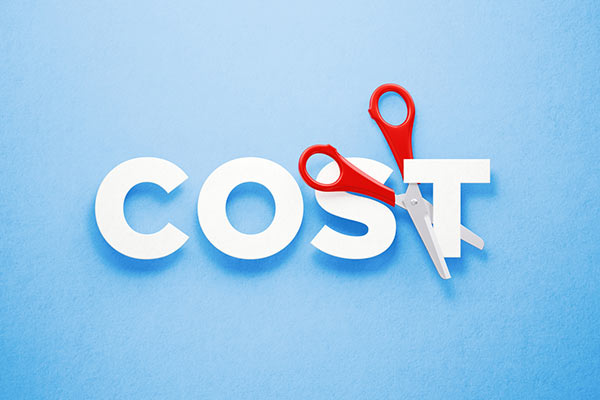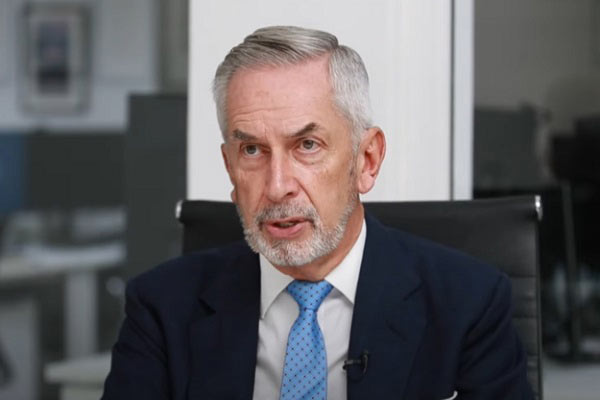Three ways to cut the cost of ISA investing in 2024
Investing for your long-term future isn’t free, but it’s important not to pay over the odds. Rachel Lacey explains how to keep your ISA costs low without compromising your returns.
16th January 2024 12:27
by Rachel Lacey from interactive investor

Even if you can’t pay any more money into your Stocks and Shares individual savings account (ISA), it’s still possible to get more ‘bang for your buck’ by cutting your investments costs.
The platform you use, the investments you choose and the frequency that you trade will all have an impact on the amount of money you pay to invest in a Stocks and Shares ISA. And, if you aren’t mindful of those costs, they can quickly rack up.
- Invest with ii: Open an ISA | ISA Investment Ideas | ISA Offers & Cashback
But charges don’t have to devour your returns. There are plenty of steps you can take to start reducing your investment costs.
1) Pick your platform
Most investment platforms will charge you a fee to have an account – whether you have an ISA, a self-invested personal pension (SIPP) or a general investment account. Normally this is a percentage-based fee, which means your costs go up over time as the value of your investments grow.
However, some platforms – interactive investor included – charge a fixed fee each month, irrespective of the amount you have invested. Depending on your choice of platform, this can work out more expensive if you are starting to invest from scratch, or you only have a small amount invested. But they become better value as your holding increases.
interactive investor also has different charging levels for different types of investor, which makes it easier to avoid paying for services or benefits that you don’t need or won’t use.
Investor Essentials starts at £4.99 for those with less than £50,000 invested. Alternatively, you can select the Investor plan, which costs £11.99 a month but also includes a free trade each month and as many Junior ISAs as you have children. Two friends or family members can also open an account free of charge too.
2) Change your investment strategy
We’re not talking about boosting returns by taking on additional risk or becoming a part-time trader here; but investors who want to cut their costs can do so by selecting different investments.
When we say different, we actually mean cheaper, but not necessarily at the expense of quality. Nor does it mean you have to take a hit on performance.
Take Terry Smith’s flagship fund, Fundsmith Equity, the most-bought fund on the interactive investor platform in 2023. Smith’s buy and hold strategy is popular among investors – Smith (pictured below) doesn’t invest in many stocks and those that he does buy - he picks on the grounds of growth potential and keeps for the long term.
But while Fundsmith has outperformed its benchmark (MSCI World Index) over 10 years, it’s trailing over five and – in particular – three years. Over these time frames, investors would have been better off with a cheaper, passive fund that tracked the global index instead – called index funds or exchange-traded funds (ETFs). Figures from FE Analytics show that over five years Fundsmith Equity is up 71.8% versus 76.4% for the iShares Core MSCI World ETF. Over three years, Fundsmith Equity has returned 19.9%, while the ETF is up 30.5%.
It is, of course, easy to look back in hindsight, and the past is no guide to the future. Moreover, it is important to look under the bonnet to assess whether there’s an obvious reason why an active fund is lagging a passive fund. In this case, the strong performance of the US tech giants has, particularly over the past year, given the ETF a boost and proved a headwind for Fundsmith Equity as it does not own all the so-called Magnificent Seven firms.

This example does, however, underscore that paying more for an active fund does not always guarantee outperformance.
To compare the cost of funds, it’s important to check its ongoing charges figure (OCF). This reflects the yearly cost of investing in a particular fund, although does not include transaction costs – the fees accrued when a fund manager buys and sells.
Fund fees vary. For an active fund investing in equities or bonds – with a named manager picking and choosing investments – investors can expect to pay in the region of 0.7% to 1%. Other strategies have higher fees, of around 1% to 1.3%. Those at the more expensive end are typically multi-asset or multi-manager funds. Fundsmith, for reference, has an OCF of 0.94%.
Most passively managed funds, which track a stock market index instead, will have an OCF below 0.5% and often well below that mark. The HSBC FTSE All-World Index, for example – another popular fund among ii investors - has an OCF of just 0.13%. The iShares Core MSCI World ETF USD Acc GBP (LSE:SWDA) has an OCF of 0.2%.
When buying an active fund, investors are hoping the fund manager will deliver outperformance over a comparable index, and therefore the higher fee levied will provide value for money. However, the reality is that not all can achieve this feat and the data shows that more fail than succeed.
- Which ISA should I choose for my financial goals?
- 10 hottest ISA shares, funds and trusts: week ended 12 January 2024
The S&P Spiva report, which compares the performance of active and passive investments claims that over the past decade at least 80% of active funds underperformed their index in 17 out of 22 categories.
Of course, that’s not to say you should never use actively managed funds, but you should have a solid reason to hold them, beyond the simple belief that they are “better”.
The lower cost of passive funds is not the only attraction. Many investors also find they make their portfolio easier to manage. That’s because, in terms of returns, they just deliver the index. You don’t need to worry about whether you have picked the right manager or the risk of them making a bad call – your decisions just come down to the index you want to invest in and the cost of the various options.
3) Think about your trading style
When you are choosing both your platform and - in the case of ii investors - your subscription plan, it’s also important to think about your trading habits.
If you are buying or selling shares on regular basis, you need to take trading costs into account as well. Sometimes, the savings made by going for the cheapest deal will be undone by the charges you need to pay to trade.
Just look at ii subscriptions as an example. With the cheapest option, Investor Essentials, you will only pay £4.99 a month, but there will be an additional £3.99 to pay for each UK or US trade. With the mid-range Investor plan, which costs £11.99, you’ll get one free trade and then pay £3.99 for each subsequent trade. Super Investor, at £19.99 a month, meanwhile includes two free trades.
It's important to note though that you can invest for free every month on all plans using the free regular investing service – trading charges will only apply to your timed, ad hoc trades.
There’s nothing wrong with trading regularly, especially if you’re confident you aren’t paying over the odds. Nonetheless, it does still make sense to consider why you trade so frequently. If it’s part of your strategy, is something you enjoy and it’s paying off returns wise, then great. But if you are trading because you are regularly changing your mind, panicking, or just responding to something you read online this morning, then it’s less likely to pay off. In these cases, you are likely to find that your trading habits are an unnecessary cost that’s making a big dent in your returns. By taking a more restrained or considered approach you could cut your costs substantially.
If you only buy and sell infrequently, make sure you aren’t paying for service or benefits you don’t need or are unlikely to use.
These articles are provided for information purposes only. Occasionally, an opinion about whether to buy or sell a specific investment may be provided by third parties. The content is not intended to be a personal recommendation to buy or sell any financial instrument or product, or to adopt any investment strategy as it is not provided based on an assessment of your investing knowledge and experience, your financial situation or your investment objectives. The value of your investments, and the income derived from them, may go down as well as up. You may not get back all the money that you invest. The investments referred to in this article may not be suitable for all investors, and if in doubt, an investor should seek advice from a qualified investment adviser.
Full performance can be found on the company or index summary page on the interactive investor website. Simply click on the company's or index name highlighted in the article.
Please remember, investment value can go up or down and you could get back less than you invest. If you’re in any doubt about the suitability of a stocks & shares ISA, you should seek independent financial advice. The tax treatment of this product depends on your individual circumstances and may change in future. If you are uncertain about the tax treatment of the product you should contact HMRC or seek independent tax advice.